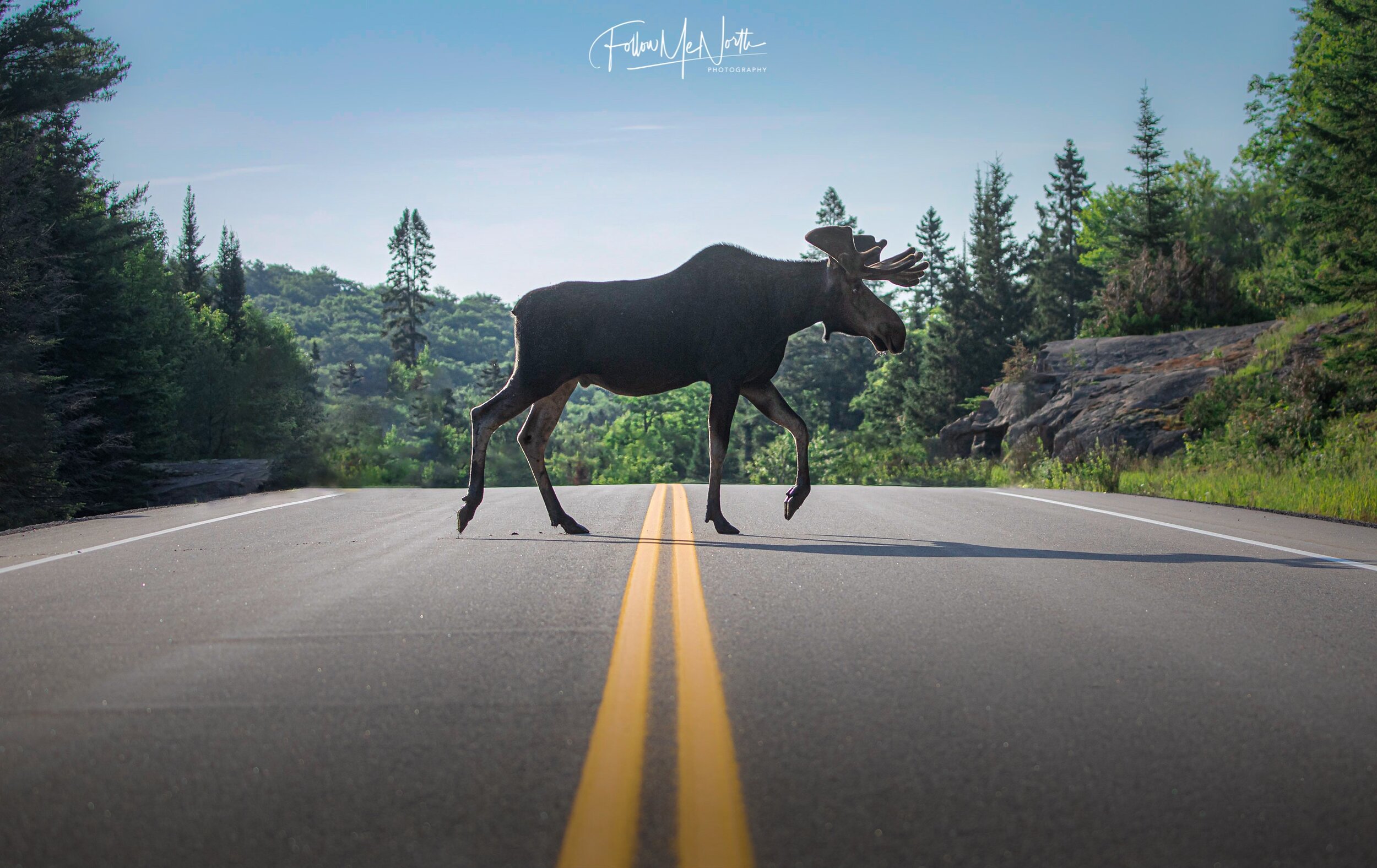9 Tips to Avoid a Moose Collision in Algonquin Park
We all love moose, right? Although the number of moose in Algonquin Park can change frequently from year to year, it’s estimated that 2500-4500 moose call Algonquin Park their home. We share the park with many permanent wildlife residents…lets help give them a chance!
As travelling begins again, now that Ontario enters phase one of the re-opening plan, we’ve seen an increase of traffic driving through Algonquin. According to the Ontario Road Safety Annual Report, the number of animals struck on Ontario roads has increased by 47% from 1999 to 2014. According to another study, that number becomes even more staggering, with approximately 14,000 wildlife-vehicle collisions happening per year in Ontario.
We’ve put together some safety tips below:
1. Drive more cautiously. It’s common for us to drive in a state of “auto pilot” without paying attention of our surroundings. Be alert and play the “what if” game while driving through the park. “What if there’s a moose standing on the road over this hill?” “What if there’s a moose and a calf crossing around this corner?” Animals are active 24 hours a day. Being aware at all times will help your chances of avoiding an unfortunate wildlife collision.
2. Drive the speed limit. The speed limit through Algonquin Park is 80km per hour. However, it’s common to see cars and trucks reaching speeds over 100km per hour. Instead, take the time to enjoy the beauty that surrounds you. Keep your attention on high alert and keep scanning the roadsides for any signs of wildlife.
3. Dawn and dusk are often the most dangerous for wildlife collisions. Drive with extra caution during these times of day. Drive with your high beams on when it gets dark, but also be courteous of oncoming traffic while doing so. Remember too switch to low beams while traffic is approaching to avoid blinding the other driver. Please don’t drive behind someone with your high beams on as it’ll be more distracting for the driver ahead of you. Large animal collisions spike in May-June and again in the autumn months during mating season.
4. Ask others in your vehicle to scan the roadsides, too. Ask everyone to put down their electronic devices and enjoy the drive together. It’s exciting to come across a moose while driving as long as you have time to slow down and enjoy the moment.
5. If you come across a moose (or any wildlife) in the park, and want to enjoy a few moments of watching their behaviour, please safely pull over onto the shoulder. Remember this is a highway and many large vehicles pass through Algonquin Park daily. Make sure your vehicle is safely off of the main highway and your wheels are over the shoulder white line. Turn your 4 way hazard lights on to warn other drivers to slow down.
6. Remember that wildlife can be very unpredictable. Sometimes honking your horn can spook the animal and cause it to run back onto the highway. It’s recommended to put your hazard lights on, slow down and observe the behaviour of the animal while passing by slowly. Be aware of traffic behind you, too as we’ve seen accidents occur while slowing down too fast and not pulling over safely.
7. When there’s one animal, there might be more! Often times we’ll see a moose on one side of the road, and occasionally there’s another one or two on the other side of the highway attempting to cross. Remember to always be alert on both sides, even if you only see one.
8. In the event of a collision, pull over safely. Try to catch your breath and remain calm. Do not approach the injured animal as it can be dangerous. Be sure to put your four way hazard lights on to warn of other drivers.
9. It’s a good idea to report the location of your collision even if your car hasn’t been damaged, as this helps officials monitor any injured animals or recover animals that may have been fatally hit. In the case of an emergency and/or wildlife collision, contact the nearest Algonquin Park office 613-637-2828 or call: Ontario Provincial Police 1-888-310-1122
Be safe and enjoy the views!
All photos by Jesse & Susan - Instagram @followmenorth



